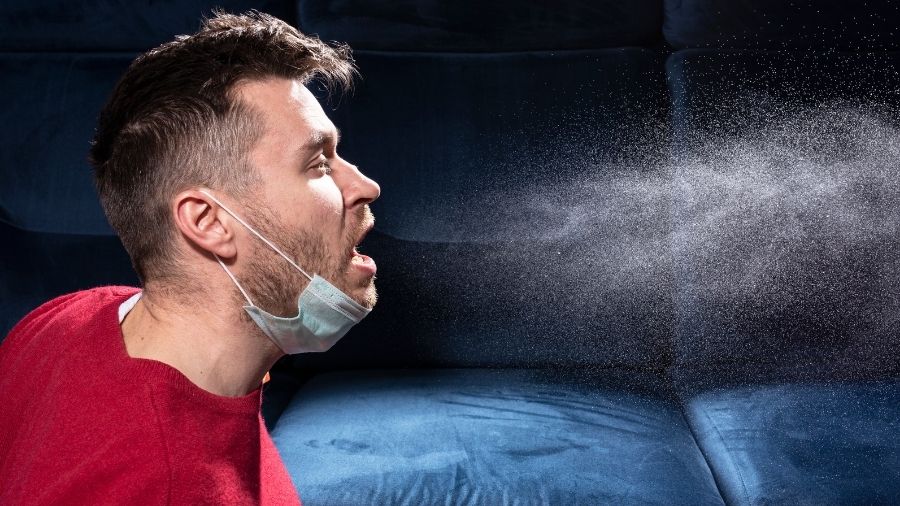Nasal droplets fall within 2 metres from a Covid-19 infected person and the aerosols can travel in air up to 10 metres, the Office of the Principal Scientific Adviser said on Thursday, adding that proper ventilation can decrease the risk of transmission.
In its advisory 'Stop the Transmission, Crush the Pandemic--Masks, Distance, Sanitation and Ventilation to prevent the spread of SARS-CoV-2 virus', the Office of the Principal Scientific Adviser (PSA) noted that well-ventilated spaces play a crucial role in diluting the Covid-19 viral load of infected air and help in decreasing the risk of transmission from one infected person to the other .
Saliva and nasal discharge in the form of droplets and aerosols carry the virus from one person to another. Larger size droplets fall to the ground and on surfaces, and smaller aerosol particles are carried in the air to greater distances, the advisory said.
In closed un-ventilated indoor spaces, droplets and aerosols become quickly concentrated and greatly increase the risk of transmission to people in the area, it said.
Droplets fall within 2 metres from an infected person and aerosols can be carried in the air up to 10 metres, it said.
The earlier protocol was to maintain six feet (1.8 metres) distance to prevent the spread of the novel coronavirus infection.
There have been instances of people taking to social media to express their anguish that they were infected despite not coming in contact with outsiders.
Earlier this year, a study done by the Centre for Cellular and Molecular Biology (CCMB), Hyderabad and the Institute of Microbial Technology (IMTech), Chandigarh found that the infection can be transiently airborne.
Scientists have also worked with a couple of hospitals to find if the virus particles can be found in air samples in the hospital wards.
In its advisory, the Office of the PSA said ventilation is a community defence that protects all of us at home or at work.
The advisory highlights the important role well-ventilated spaces play in diluting the viral load of infected air in poorly-ventilated houses, offices, among others.
Ventilation can decrease the risk of transmission from one infected person to the other, it said.
Just as smells can be diluted from the air through opening windows and doors and using exhaust systems, ventilating spaces with improved directional air flow decreases the accumulated viral land in the air, reducing the risk of transmission, the advisory explained.
Ventilation is a community defense that protects all of us at home or at work. Introducing outdoor air in offices, homes and larger public spaces is advised.
Measures to improve ventilation in these spaces must be taken up on urgent priority in urban and rural areas alike, recommendations for hutments, homes, offices and large centralised buildings are given. Simple strategic placement of fans, open windows and doors, even slightly open windows can introduce outdoor air and improve the air quality inside, it stated.
Introduction of cross ventilation and exhaust fans will be beneficial in curtailing the spread of the disease, it said.
In buildings with central air-management systems, improving central air filtration/increased filtration efficiency is especially helpful when enhanced outdoor air delivery options are limited.
In offices, auditoriums, shopping malls, among others, use of gable fan systems and roof ventilators are recommended. Frequent cleaning and replacement of filters is highly recommended, it added.
Saliva and nasal discharge in the form of droplets and aerosols, by an infected person while exhaling, talking, speaking, singing, laughing, coughing or sneezing is the primary mode of virus transmissions. An infected person who shows no symptoms can also transmit the virus.
People without symptoms can spread the virus. People should continue wearing masks, double masks or N95 masks, it said in its advisory.
The SARS-CoV-2 virus infects a human host where it can multiply, in the absence of the host it cannot survive, and stopping the transmission of the virus from a person to another person will decrease the infection rate of the disease to a level where it can eventually die, it added.










